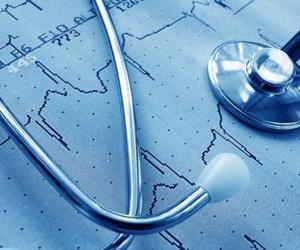What are the Signs and Symptoms of Lung Cancer?
Lung cancer is not a disorder that is confined to the lungs alone.

Lung cancer is one of the most common cancers in the world. It is a leading cause of cancer death in men and women worldwide. Lung cancer defies classification as a single disease affecting just one organ. The warning signs and painful symptoms represent major systemic disorders in different parts of the body. The symptoms are so varied and unique to each individual that comparative studies offer little solace. Lung cancer usually shows no signs and symptoms in its early stages and may take years to develop. And when symptoms begin to appear, it usually means that the disease is advanced or has spread to the other parts or organs of the body.
Symptoms of a Dysfunctional Lung
The most visible symptoms of lung cancer are those associated with a dysfunctional lung.
• Regular and persistent coughing
• Breathlessness and chest pain
• Hoarseness or raspy voice
• Wheezing, with or without rattling
• Recurring infections
• Pneumonia worryingly recurs and each episode lasts longer
Consequences on the Abdominal Cavity
The uniqueness of lung cancer lies in the fact that it affects not only the tissues of the lung; it also generates side effects in other organs, predominantly those in the abdominal cavity.
• Loss of strength and suppleness in hand muscles
• Bones and joints become painful owing to calcium deficiency
• Dull abdominal ache that sharpens upon pressing on the area
• Fever, disinterest in food, and weight loss
• Excessive accumulation of bilirubin
• Fluid buildup and swelling in the chest or abdomen
Paraneoplastic Syndromes
Some lung cancers can create hormone-like substances that enter the bloodstream and cause problems with distant tissues and organs, even though the cancer may not have spread to those tissues or organs. These problems are called paraneoplastic syndromes. Sometimes these syndromes can be the first symptoms of lung cancer because these symptoms affect organs other than the lungs. A growing tumor releases various substances. Substances like hormones and autoantibodies interfere with the functioning of healthy tissues. They provoke the immune system to destroy healthy tissue and worsen the following symptoms.
• Higher concentration of calcium
• Blood clotting and bruising of blood vessels
• Abnormal mammary growth in men
• Loss of bearings and unsteady walking
Dysfunction in the Circulatory System
The circulatory system which is vital for oxygenating tissues, removing waste, and defending against infection could suffer numerous disorders owing to cancer cell division.
• Cardiac arrest owing to blockage created by blood clots
• Bruising or blistering of blood vessels by weakened platelets
• Dysfunctioning red blood cells, causing fatigue
• Tiredness, headache, and dizziness following excessive protein buildup
• Dysfunctional white blood cells causing fever and fatigue
Symptoms Manifested on the Skin
The skin probably shows the first signs and symptoms of cancer and offers a diagnostic bonanza for assessing the stage of cancerous activity.
• Inflammation of skin with roughened skin under joints
• Frequent itching aggravated by rubbing
• Formation of dark patches; skin dries and hardens giving a thick scaly appearance
Bone and Muscle Symptoms
Advanced stages of lung cancer are often characterized by the spread of the cancer to distant sites in the body. This may affect the bones, liver, or brain. As other parts of the body are affected, new lung cancer symptoms may also develop. Perhaps the most serious effects are those that compromise the bones and muscles of the body. These symptoms seriously alter the quality of physical activity of the person with lung cancer.
• Chronic inflammation in muscles leading to stiffness and immobility
• Bamberger-Marie syndrome, where bones grow disproportionately in extremities
• Becoming injury prone as bones soften
• Weakening and pain following loss of muscular flexibility
Symptoms Due to Damage Caused to the Brain, Spinal Tissue, and Nerves
Considerably more difficult to gauge is the extent of damage incurred by the brain, spinal tissue, and nerves. Any damage to these organs leads to long-term damage and disability. The growing tumor may release substances that cause the immune system to attack healthy tissue to produce the following symptoms.
• Unsteady gait and unbalanced movements
• Muscles of the groin, hips, and joints lose flexibility
• Loss of sensation in hands and feet
• Serious or partial impairment of the brain
• Bone pain and bone marrow degeneration
• Irregular motions following nausea, vomiting, and abdominal pain
• Visual disturbance
General Behavior and Health Changes
Apart from this, lung cancer may also affect the behavioral pattern of an individual. As we are fully aware that behavioral changes can often be linked to changes in the ways major hormones function. Hormone dysfunction can be traced to the negative impact of substances that are released by tumor cells when they grow. Cancerous tissue is capable of producing substances that stimulate the nerve centers in the brain. This affects the functioning of abdominal and reproductive organs. Among the various symptoms caused by lung cancer, the most severe one’s include the one’s that affect the mental and psychological functioning of an individual because physical pain may still be cured but mental pain cannot be tamed by any sort of medication or treatment. Some of the most general behavioral and health changes caused by lung cancer include:
• Fatigue and lack of interest in food
• A cough that doesn't go away and gets worse over time
• Coughing up blood
• Shortness of breath, wheezing, or hoarseness
• Repeated problems with pneumonia or bronchitis
• Swelling of the neck and face
• Loss of appetite or weight loss
• Agitation and confusion
• Seizure and coma
• Breathlessness and chest pain
• Excessive thirst and urination
• Declining or nonexistent libido
Afterword
What we have described is the science behind the symptoms characterizing the physical and emotional upheaval that follows lung cancer. Doctors diagnose lung cancer by conducting a physical exam, imaging, and lab tests. Treatment depends on the type, stage, and how advanced the disease is. While treatments of lung cancer include surgery, chemotherapy, radiation therapy, and targeted therapy, the targeted therapy uses substances that attack cancer cells without harming normal cells. The symptoms unique to each individual are best tackled holistically at different levels of the mind, body and the spirit. It is therefore advised that one must always maintain a good lifestyle pattern with proper health check-ups at a regular interval of time.













